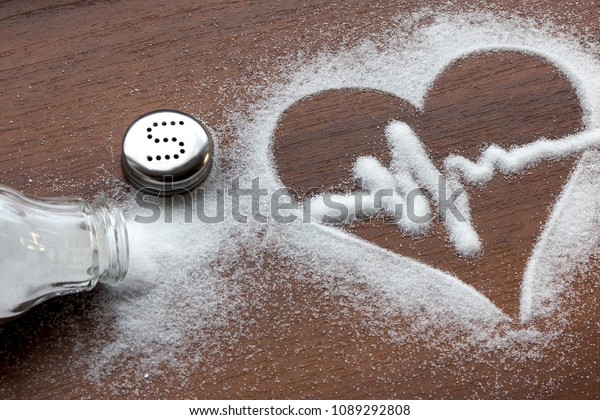Bone Eating Diseases Pagets Disease of Bone. Pagets disease of bone or simply Pagets disease is an osteolytic disease 2.

NIAMS states that osteoporosis is a disease characterized by reduced bone mineral density and bone deterioration which results in fragile bones and an increased risk for fracture.

Bone eating disease. The earlier eating disorders occur and the longer they last the greater the risk of bone loss and osteoporosis. It is a rapid progressing type of bacterial infection that destroys the skin fat and tissue that covers the muscle in a short time span within 12 to 24 hours. Pagets disease of bone makes them weak.
Gorhams disease pronounced GOR-amz also known as Gorham vanishing bone disease and phantom bone disease is a very rare skeletal condition of unknown cause characterized by the uncontrolled proliferation of distended thin-walled vascular or lymphatic channels within bone which leads to resorption and replacement of bone with angiomas andor fibrosis. Bones can also develop cancer and infections. Eating foods rich in calcium and vitamin D getting plenty of exercise and having good health habits help keep our bones healthy.
Common risk factors for osteoporosis. Broken bones called fractures can be painful and sometimes need surgery to heal. There has been a marked increase in eating disorders in the last decade however it is difficult to determine the true extent of the disease due to the secretive nature of this disease.
Beim Hungry-Bone-Syndrom kurz HBS handelt es sich um eine prolongierte Hypokalzämie nach einer Parathyreoidektomie. Multiple myeloma is an osteolytic disease. Treatments depend on the disorder and how severe it.
Good nutrition is critical throughout your life. Tests for bone marrow diseases include blood and bone marrow tests. This condition is uncontrollable without help.
In myeloproliferative disorders the bone marrow makes too many white blood cells. Symptoms usually include red or purple skin in the affected area severe pain fever and vomiting. From Wikipedia the free encyclopedia Necrotizing fasciitis NF also known as flesh-eating disease is an infection that results in the death of parts of the bodys soft tissue.
But if we dont eat right and dont get enough of the right kinds of exercise our bones can become weak and even break. The portrayal of eating disorders onscreen has been notoriously tricky for Hollywood and despite some preventative efforts To The Bone is facing some of the same criticism as its predecessors. National Institute of Arthritis and Musculoskeletal and Skin Diseases.
While osteoporosis is a severe problem in patients with eating disorders bone loss if recognized early can be addressed and potentially reversed. Osteoporosis or decreased bone density is one of the many serious complications facing any individual that suffers or has suffered from an eating disorder. Sie tritt als Folge des plötzlichen postoperativen Parathormon -Entzugs bei einer über längere Zeit vorbestehenden Mineralisationsstörung des Knochens im Rahmen eines Hyperparathyreoidismus auf.
Eating disorders can be harmful to your bones at any age. Throughout the movie Ellen wraps her hands around her bicep to see if she can get her fingers to touch. This is known as body checking Other eating disorder symptoms accurately shown in the movie include.
The following are just a few of the many myths about amenorrhea and bone loss due to an eating disorder. NIAMS reports that osteoporosis is both treatable and preventable. Birth control pills are commonly prescribed in an attempt to restart menses and to minimize bone weakness.
Lifestyle risk factors that can contribute to bone diseases include an unhealthy diet a sedentary lifestyle excess body weight smoking excessive use of alcohol and the use of some types of medications. Birth control pills can solve the problem of amenorrhea due to an eating disorder. Infection is invasion of the body with organisms that have the potential to cause disease.
When eating disorders happen during youth bones may not grow to be as dense and strong as they should. When bacteria invade bone bone infection also called osteomyelitis occurs. The bacteria eat away at the bone and damage the local blood supply to that bone consequently preventing antibiotics from reaching the bacteria.
Flesh eating disease is also known as necrotizing fasciitis which means decaying skin. However once the patient does develop osteoporosis there is currently no cure for it. Other bone diseases which are caused by poor nutrition genetics or problems with the rate of bone growth or rebuilding.
It is a severe disease of sudden onset that spreads rapidly. To the Bone shows different behaviors to represent how someone with an eating disorder may act and it uses several characters to portray a variety of eating disorder behaviors. The key is recognizing the problem early and taking decisive steps to address the bone loss before things go too far.
The International Myeloma Foundation or IMF--an. Binge Eating Disorder BED When a person eats excessively and multiple portions of food within a long timeshort time or more than enough amount of food within a long timeshort time throughout the day and possibly at night and possibly gains weight from it depending on metabolism. What causes bone infection.
Osteoporosis is a bone-eating. Although osteoporosis is seen more often in women both women and men are affected by the disease. Other diseases such as lymphoma can spread into the bone marrow and affect the production of blood cells.
Causes of bone marrow diseases include genetics and environmental factors.


